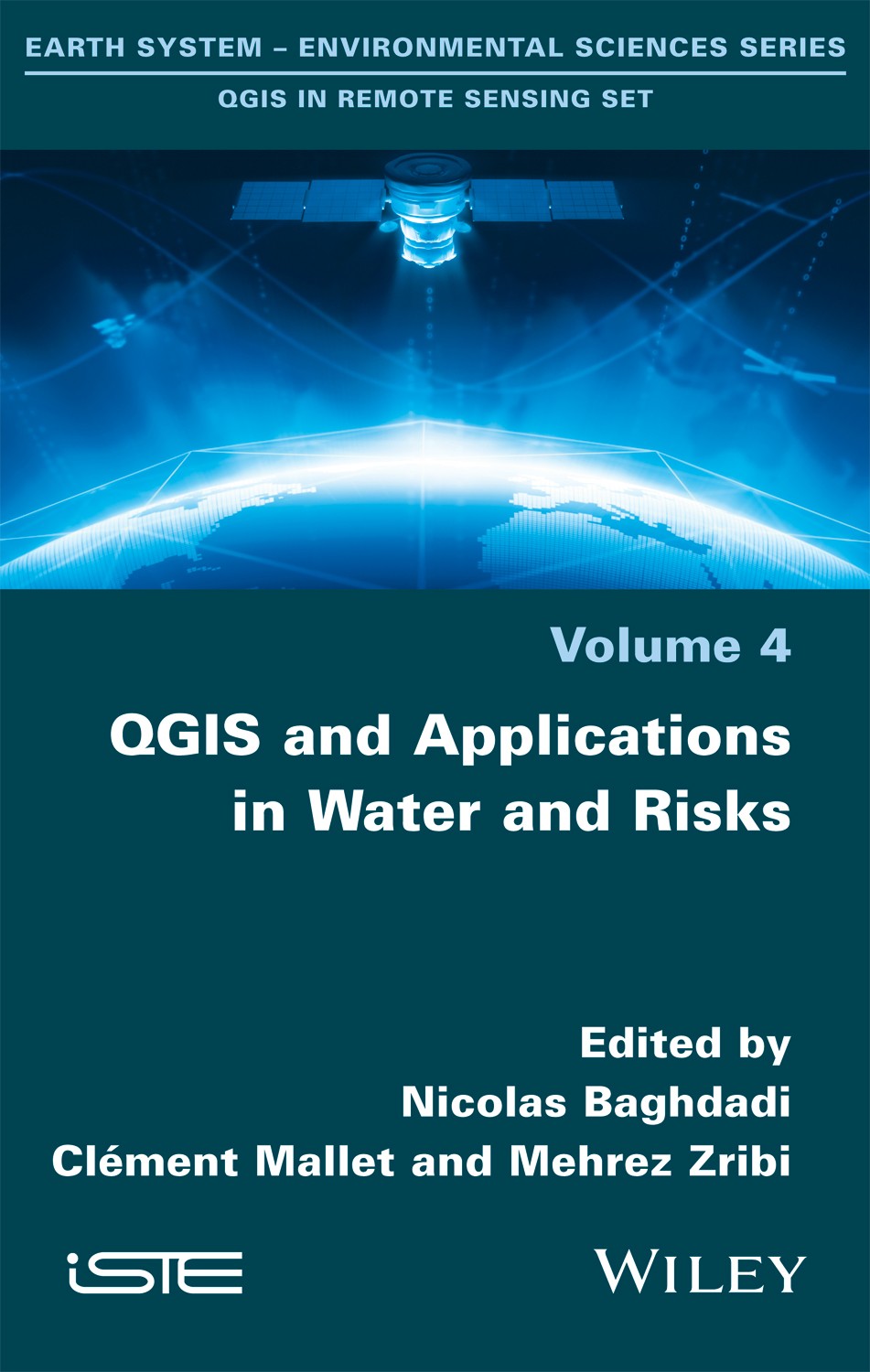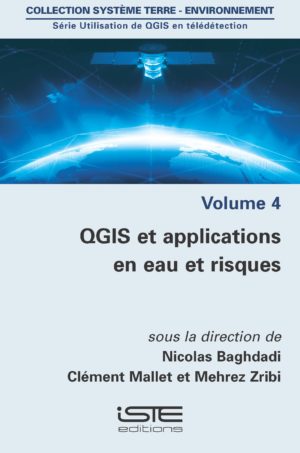
The QGIS in Remote Sensing Set aims to facilitate the appropriation and operational use of the Quantum Geographic Information System (QGIS) software in the field of remote sensing. This fourth volume of the set is dedicated to the presentation and the practice of QGIS and its libraries of applications dealing with water and risk management […]
The QGIS in Remote Sensing Set aims to facilitate the appropriation and operational use of the Quantum Geographic Information System (QGIS) software in the field of remote sensing.
This fourth volume of the set is dedicated to the presentation and the practice of QGIS and its libraries of applications dealing with water and risk management issues. In the context of global changes (climatic and anthropogenic), understanding and quantifying water resource dynamics and the various aspects of risks is essential for managers in public authorities and local population.
This work is carried out by scientists who are proficient to a high level of technicality. The book is targeted at students (Masters, engineering students, PhDs), engineers involved in the management of water resources and territory, and research teams in geomatics. In addition to the text, readers will have access to data and tools allowing the integral realization of the scientific procedures described in each chapter, as well as screenshots of all the windows which illustrate the manipulations necessary for the realization of each application.
1. Monitoring Coastal Bathymetry Using Multispectral Satellite Images at High Spatial Resolution,
Bertrand Lubac.
2. Contribution of the Integrated Topo-bathymetric Model for Coastal Wetland Evolution: Case of Geomorphologic and Biological Evolution of Ichkeul Marshes (North Tunisia),
Zeineb Kassouk, Zohra Lili-Chabaane, Benoit Deffontaines, Mohammad El Hajj and Nicolas Baghdadi.
3. Reservoir Hydrological Monitoring by Satellite Image Analysis,
Paul Passy and Adrien Selles.
4. Network Analysis and Routing with QGIS,
Hervé Pella and Kenji Ose.
5. Representation of the Drainage Network in Urban and Peri-urban Areas Using a 2D Polygonal Mesh Composed of Pseudo-convex Elements,
Pedro Sanzana, Sergio Villaroel, Isabelle Braud, Nancy Hitschfeld, Jorge Gironas, Flora Branger, Fabrice Rodriguez, Ximena Vargas and Tomas Gomez.
6. Mapping of Drought, Mohammad El Hajj, Mehrez Zribi,
Nicolas Baghdadi and Michel Le Page.
7. A Spatial Sampling Design Based on Landscape Metrics for Pest Regulation: The Millet Head Miner Case Study in the Bambey Area, Senegal,
Valérie Soti.
8. Modeling Erosion Risk Using the RUSLE Equation,
Rémi Andreoli.

